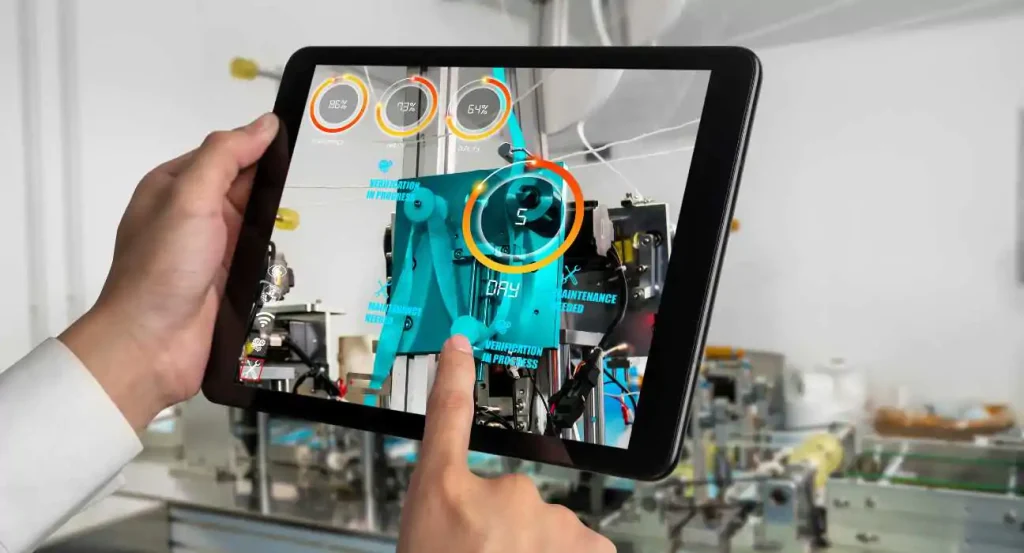Augmented Reality (AR) has evolved from novelty filters and gaming gimmicks into a transformative technology reshaping how we interact with the world. In 2025, AR apps are becoming an essential part of everyday life—enhancing entertainment, education, healthcare, retail, and more. With rapid advances in mobile hardware, 5G connectivity, and spatial computing, AR apps are more powerful, immersive, and user-friendly than ever.
This article explores the rise of augmented reality apps in 2025, their key use cases, and what the future holds.
🤳 What Is Augmented Reality?
Augmented Reality (AR) overlays digital content—such as images, sounds, or 3D models—onto the real-world environment through smartphones, tablets, smart glasses, or AR headsets. Unlike virtual reality (VR), which creates a fully immersive digital world, AR enhances the real world by adding interactive digital elements.
📱 Popular Augmented Reality App Categories in 2025
1. Retail & E-Commerce
AR apps let shoppers try products virtually before buying:
- Virtual try-ons for clothes, shoes, makeup, and glasses.
- Furniture and home décor previews using smartphone cameras.
- In-store AR kiosks for product demos and immersive promotions.
Example: IKEA Place now allows users to visualize entire room makeovers with real-time lighting and scale adjustments.
2. Education & Training
AR makes learning interactive and engaging:
- 3D models of historical artifacts, human anatomy, or space systems.
- Hands-on technical training for fields like medicine, aviation, and engineering.
- Language learning enhanced with interactive visuals and gamification.
Example: Apps like Merge EDU and Google Expeditions offer immersive AR-based learning experiences in classrooms.
3. Healthcare
AR apps assist both professionals and patients:
- Surgical planning tools that project 3D organ models.
- Real-time vein mapping and diagnostics.
- Patient engagement apps for rehab, therapy, and medication guidance.
Example: AccuVein uses AR to help medical staff locate veins for injections or IVs more accurately.
4. Navigation & Travel
AR makes exploring easier and more intuitive:
- Real-time walking directions overlaid on streets and sidewalks.
- Interactive AR guides at museums and historical landmarks.
- Language translation and information overlays for travelers.
Example: Google Maps Live View offers AR navigation by displaying directional arrows in real-world view.

5. Gaming & Entertainment
Still one of the most popular AR categories:
- Games that blend physical surroundings with digital play (e.g., Pokémon GO).
- AR social media filters and effects on platforms like Instagram and Snapchat.
- Immersive concerts, events, and sports viewing with AR overlays.
Example: Niantic’s Lightship platform enables developers to create shared, location-based AR experiences.
6. Workplace & Collaboration
AR transforms how teams work remotely:
- Virtual whiteboards and 3D design visualization in meetings.
- Remote assistance through AR annotations and step-by-step guidance.
- AR modeling tools for architects, engineers, and creatives.
Example: Microsoft’s HoloLens and Mesh are widely used for industrial training and collaborative 3D design.
🚀 Key Technologies Powering AR Apps in 2025
- 5G Connectivity: Delivers high-speed, low-latency data for real-time AR experiences.
- LiDAR & Depth Sensing: Allows precise mapping of physical environments.
- AI Integration: Enhances object recognition and contextual understanding.
- Cloud AR: Offloads processing to the cloud, enabling lighter, faster mobile apps.
- Wearable AR Devices: Smart glasses and headsets provide hands-free interaction.
🔐 Challenges Facing AR Apps
While AR is advancing fast, it still faces hurdles:
- Privacy Concerns: AR devices often collect visual and location data.
- Hardware Limitations: Not all users have access to AR-capable devices.
- Development Costs: Building high-quality AR apps requires specialized skills.
- User Adoption: Some users are still unfamiliar or hesitant about AR technology.
🔮 The Future of AR Apps
By 2030, AR is expected to be as commonplace as smartphones today. Future developments may include:
- More immersive mixed reality experiences that blend AR and VR.
- AR-powered smart cities, with real-time information overlays.
- Neural interface AR using brain-computer interaction for control.
✅ Conclusion
Augmented reality apps in 2025 are transforming how we learn, shop, play, and work. With powerful features, growing user demand, and broad industry adoption, AR is no longer just futuristic—it’s practical, engaging, and already part of our daily lives.
As technology continues to evolve, AR apps will redefine the boundaries between the digital and physical worlds—making the impossible, visible.



